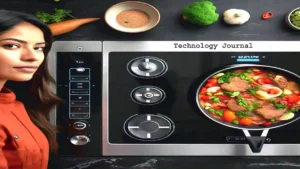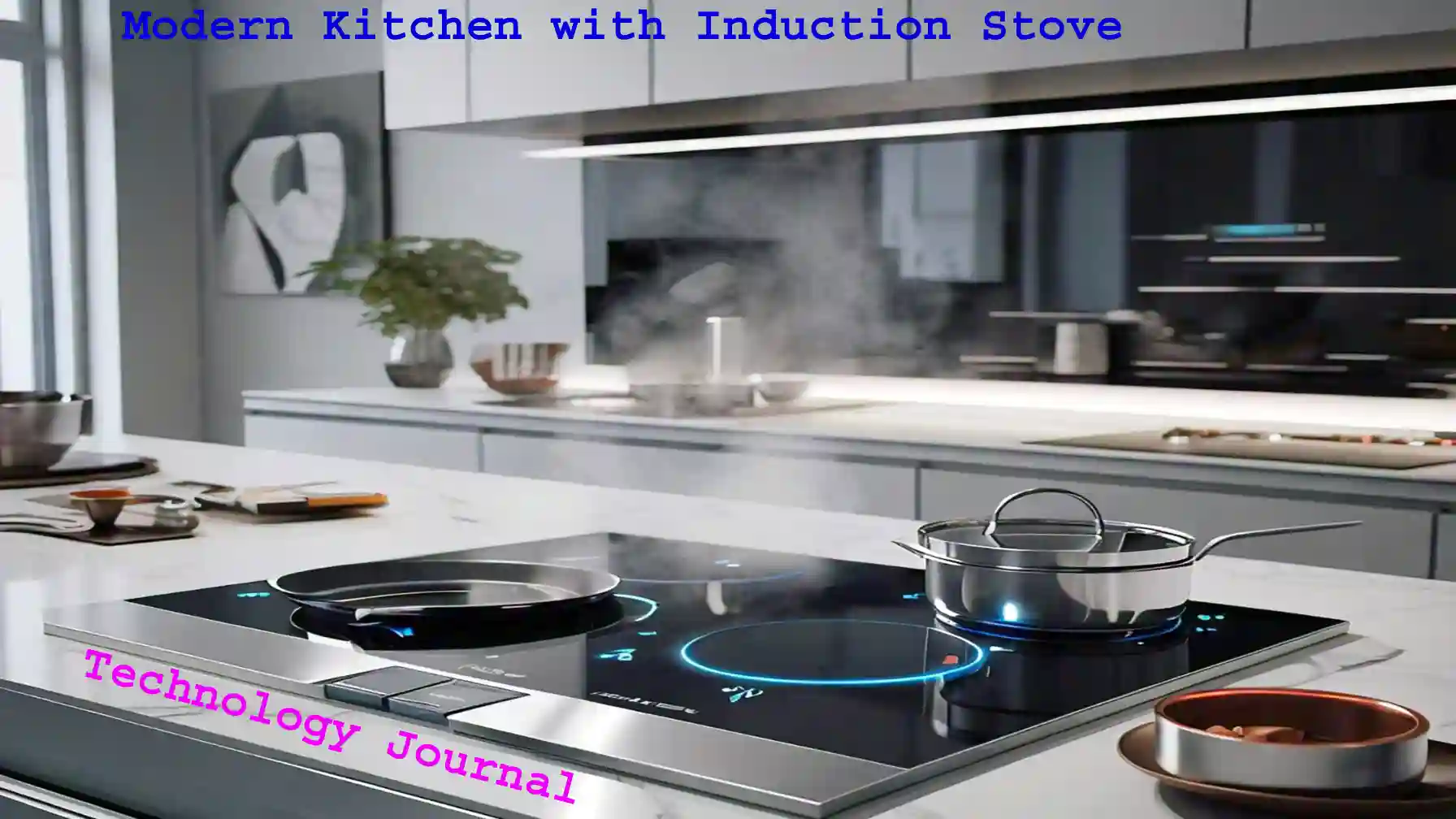The induction stove is redefining the culinary landscape. Unlike traditional gas or electric stoves, this innovative appliance employs electromagnetic fields to directly heat cookware. This revolutionary technology offers a host of advantages that are transforming kitchens worldwide. By eliminating the need for open flames or heated coils, induction stoves provide a safer, more efficient, and precise cooking experience.
From professional kitchens to home cooking enthusiasts, the demand for induction stoves is surging. Their ability to rapidly heat cookware, coupled with precise temperature control, has made them a favorite among chefs and home cooks alike. In the following sections, we will delve deeper into the science behind induction cooking, explore its numerous benefits, and guide you through selecting and using the perfect induction stove for your kitchen.
What Is an Induction Stove?
An induction stove heats cookware through electromagnetic induction. When you turn on the stove, an electric current flows through a copper coil beneath the cooking surface, creating a magnetic field that generates heat directly in the pot or pan. This leaves the stovetop itself relatively cool to the touch, making induction cooking both efficient and safe.
How Induction Stoves Work?
Induction stoves work by using electromagnetic technology, which is fundamentally different from gas or electric stoves. Here’s a more detailed look at how they function:
-
Electromagnetic Technology: Induction stoves operate using magnetic fields to produce heat directly in the cookware. This technology ensures that only the pot or pan gets hot while the stove surface remains cool. An alternating current passing through the copper coil induces an electric current in the cookware, effectively turning the pot or pan into a heat source.
Also Read: Future of AI in Voice Assistant Technology
-
Direct Heating: The magnetic field causes molecules in the cookware to vibrate rapidly, creating heat. This direct transfer of energy results in faster and more efficient cooking compared to traditional methods. With induction, there is no need to wait for the burner to heat up, as the energy goes straight to the cookware.
-
Responsive Control: Because the heat is generated directly in the cookware, induction stoves offer precise temperature control. This feature allows for quick adjustments and is particularly useful for cooking delicate dishes that require consistent heat. You can easily switch from boiling to simmering with a quick adjustment of the controls.
Compatibility with Cookware
The effectiveness of an induction stove largely depends on the cookware you use. Here’s what you need to know:
-
Material Requirements: Induction stoves require cookware made from ferrous metals, such as cast iron or stainless steel. Non-magnetic materials like aluminum or copper will not work unless they have a magnetic layer on the bottom. Many manufacturers now offer induction-compatible cookware with a ferrous metal core or base.
-
Testing for Compatibility: To check if your cookware is compatible, simply place a magnet on the bottom of the pot or pan. If the magnet sticks, the cookware is suitable for induction cooking. Many manufacturers also label their products as “induction-ready.” Investing in high-quality, compatible cookware can enhance your cooking experience on an induction stove.
Benefits of Using an Induction Stove:
Induction stoves offer numerous benefits that make them a popular choice for modern kitchens. These advantages include energy efficiency, safety features, and precise temperature control.
Energy Efficiency
One of the most compelling reasons to switch to an induction stove is its energy efficiency. Here’s how it stands out:
- Faster Cooking: Induction stoves heat cookware directly, which means food cooks faster. This efficiency results in less energy consumption, translating to lower utility bills. By reducing cooking times, induction stoves help save energy while maintaining the quality of your meals.
- Reduced Heat Loss: Traditional stoves heat the air around the cookware, leading to energy loss. In contrast, induction stoves minimize this loss by heating only the pot or pan. This focused heating method conserves energy and reduces cooking times. In fact, studies have shown that induction cooking can be up to 70% more efficient than gas cooking.
-
Environmentally Friendly: By using less energy, induction stoves contribute to a smaller carbon footprint, making them an environmentally conscious choice. If you’re looking to reduce your environmental impact, switching to induction cooking is a step in the right direction.

Safety Features
Safety is a significant concern in any kitchen, and induction stoves offer several features that enhance user protection:
- Cool Surface: Since the stovetop remains cool during cooking, the risk of accidental burns is significantly reduced. This feature is especially beneficial in households with children or older individuals. Even if you accidentally touch the stovetop, you won’t experience the same level of heat as with traditional stoves.
- Automatic Shut-Off: Many induction stoves come equipped with safety features that automatically turn off the heat when cookware is removed. This prevents accidental overheating and reduces the risk of fire. This feature is particularly useful if you’re prone to forgetfulness or if you’re cooking multiple dishes at once.
-
Overheat Protection: Induction stoves often include sensors that detect when a pot is empty or overheating, automatically reducing power or shutting off to prevent accidents. These safety features make induction stoves a top choice for those prioritizing kitchen safety.
Precise Temperature Control
Cooking requires precision, and induction stoves excel in providing accurate temperature control:
-
Consistent Results: With quick adjustments, induction stoves provide consistent cooking results. This precision is ideal for recipes that require exact temperatures, such as melting chocolate or simmering sauces. Achieving the perfect sear on a steak or maintaining a gentle simmer for a stew is easier with induction cooking.
Also Read: Trackpad vs Mouse: Which is Better for Productivity and Comfort?
- Less Risk of Overcooking: The ability to maintain stable heat levels helps prevent overcooking, which can ruin a dish’s flavor and texture. Whether you’re baking delicate pastries or preparing a multi-course meal, precise temperature control is key to success.
-
Quick Response Time: Induction stoves respond almost instantly to temperature changes, offering greater control over the cooking process compared to gas or electric stoves. You can easily adjust the heat to suit your needs, ensuring perfect results every time.
Comparing Induction Stoves to Other Types of Stoves:
To better understand the benefits of induction stoves, it’s helpful to compare them to other types of stoves, such as gas and electric models.
Induction vs. Gas Stoves
Gas stoves have long been a favorite among chefs for their responsive heat control. However, induction stoves offer some distinct advantages:
- Energy Efficiency: Induction stoves are generally more energy-efficient than gas stoves. While gas stoves lose some heat to the surrounding air, induction stoves focus energy directly on the cookware, reducing waste. This direct transfer of heat leads to quicker cooking times and less energy consumption.
- Safety: Induction stoves are safer because they don’t use an open flame. This reduces the risk of fire and burns, particularly important in busy kitchens. With an induction stove, you won’t have to worry about gas leaks or accidentally leaving the burner on.
-
Cleaning: The smooth, flat surface of an induction stove is easier to clean than the grates and burners of a gas stove, which can collect spills and grease. Simply wipe the surface with a damp cloth after cooking to maintain its pristine condition.
Induction vs. Electric Stoves
Electric stoves offer a simple and cost-effective cooking solution, but they don’t match the efficiency and precision of induction stoves:
- Heat Control: Induction stoves offer faster and more precise temperature control compared to electric coil or ceramic-top stoves, which can take longer to heat up and cool down. The instant heat adjustments of induction stoves make cooking more efficient and enjoyable.
- Energy Use: Induction stoves are more energy-efficient, as they transfer heat directly to the cookware, whereas electric stoves waste some energy heating the surrounding air. This efficiency can lead to significant savings on energy bills over time.
-
Cookware Compatibility: While electric stoves can use any type of cookware, induction stoves require magnetic pots and pans. This can be a drawback if you need to replace existing cookware, but the benefits often outweigh this inconvenience. Many cooks find that investing in high-quality, induction-compatible cookware enhances their cooking experience.
Choosing the Right Induction Stove:
When selecting an induction stove, several factors should guide your decision to ensure you find the best fit for your kitchen needs.
Size and Cooking Zones
Consider your kitchen space and cooking habits when choosing an induction stove:
-
Kitchen Space: Measure your available kitchen space to determine what size stove will fit comfortably. Induction stoves come in various sizes, from compact models suitable for small kitchens to larger units ideal for families. Consider whether you want a built-in or freestanding model based on your kitchen layout and design preferences.
- Cooking Zones: Consider how many cooking zones you need based on your cooking habits. Some models offer flexible zones that can accommodate larger cookware, while others provide multiple smaller zones for simultaneous cooking. If you often cook for large gatherings or enjoy preparing multi-course meals, choose a model with ample cooking zones.
-
Built-In or Freestanding: Decide whether you want a built-in induction cooktop or a freestanding stove. Built-in models offer a sleek, integrated look, while freestanding units provide flexibility and ease of installation. Built-in models often blend seamlessly with countertops, creating a streamlined kitchen aesthetic.
Power and Efficiency
The power and efficiency of an induction stove can significantly impact its performance:
-
Wattage: Higher wattage models heat faster but may use more energy. Choose a wattage that suits your cooking style. For example, a lower wattage may be sufficient for occasional use, while a higher wattage might be better for frequent cooking. Consider how often you cook and what types of dishes you prepare to determine the right wattage for your needs.
- Efficiency Ratings: Look for models with high energy efficiency ratings to save on utility bills. Energy Star ratings can help identify models that meet strict efficiency criteria. Choosing an energy-efficient model not only saves money but also supports environmental sustainability.
-
Induction Boosters: Some induction stoves offer a booster function that temporarily increases power for rapid heating. This feature is ideal for quickly boiling water or searing meats. If you often prepare dishes that require intense heat, such as stir-fries or steaks, look for a model with this feature.
Additional Features
Modern induction stoves come with various features that enhance convenience and functionality:
-
Smart Technology: Some induction stoves include smart technology that allows you to control the stove from your smartphone or tablet. This feature can be useful for monitoring cooking progress and making adjustments remotely. Imagine starting dinner while you’re still at the office or adjusting the heat while entertaining guests in another room.
- Built-in Timers: Timers can help manage cooking times more effectively, ensuring perfect results without the need for constant monitoring. Use timers to keep track of multiple dishes or to remind you when it’s time to check on a simmering sauce.
-
Child Lock Functions: Child lock features prevent accidental changes to the settings, providing peace of mind in households with young children. This safety feature is especially important for families, as it helps prevent accidental burns or changes to cooking settings.
How to Use an Induction Stove?
Using an induction stove requires some adjustments if you’re used to traditional cooking methods. Here’s a step-by-step guide to help you get started:
Setting Up Induction Stove
Proper setup is crucial for optimal performance:
-
Power Supply: Ensure your kitchen has the appropriate power supply for your stove model. Most induction stoves require a dedicated circuit and may need professional installation. Before purchasing, check your kitchen’s electrical capacity to ensure compatibility.
- Cookware Placement: Place the cookware in the center of the cooking zone for even heating. Ensure the pot or pan covers the entire cooking area for optimal performance. This will help achieve consistent heat distribution and prevent hotspots.
-
Initial Calibration: Some induction stoves may require initial calibration to ensure accurate temperature settings. Follow the manufacturer’s instructions for setup. This step is crucial for achieving precise temperature control and consistent cooking results.
Cooking Techniques on Induction Stove
Adjusting to induction cooking techniques can enhance your culinary results:
-
Temperature Settings: Start with lower settings until you get used to how quickly the stove heats. Induction stoves reach the desired temperature rapidly, so it’s important to monitor your food closely. Practice adjusting the heat settings to find the optimal temperature for different cooking techniques.
- Monitoring Heat: Use the stove’s temperature controls to adjust heat levels precisely as needed. Induction stoves allow for quick adjustments, making it easy to maintain the perfect cooking temperature. This feature is particularly beneficial for delicate dishes that require precise temperature control.
-
Stirring and Timing: Because induction stoves heat quickly, you may need to adjust your cooking times and stirring frequency. Pay attention to your recipes and make adjustments as necessary. Stirring more frequently can help ensure even cooking and prevent burning.
Cleaning and Maintenance of Induction Stove
Regular maintenance can extend the life of your induction stove and ensure it operates efficiently:
-
Easy Cleaning: Induction stoves have a smooth surface that is easy to clean. Simply wipe spills immediately to prevent them from sticking or staining. Avoid using abrasive cleaners that could scratch the surface. Regular cleaning helps maintain the stove’s appearance and functionality.
- Routine Checks: Regularly check the power connections and surface for any damage or wear. Inspect the cookware for signs of wear that might affect its magnetic properties. Address any issues promptly to prevent damage and ensure consistent performance.
-
Descaling: If you live in an area with hard water, descaling your cookware periodically can prevent mineral buildup and ensure efficient heating. This step is essential for maintaining the quality and performance of your induction stove.

Troubleshooting Common Induction Stove Issues:
Despite their advanced technology, induction stoves can sometimes present challenges. Here are some common problems and solutions:
Cookware Not Heating
If your cookware isn’t heating properly, consider the following:
-
Incompatible Cookware: Make sure your cookware is compatible with induction stoves. Use pots and pans made from magnetic materials, and test with a magnet if unsure. Investing in high-quality, induction-ready cookware can enhance your cooking experience and prevent compatibility issues.
- Cookware Position: Check that the cookware is placed correctly within the cooking zone. Improper placement can lead to uneven heating or a failure to activate the induction process. Ensure that the cookware is centered and covers the entire cooking area for optimal performance.
-
Size Mismatch: Ensure the cookware size matches the cooking zone. Using pots that are too small may prevent the induction process from activating. Choose cookware that is appropriately sized for your stove’s cooking zones to ensure efficient heating.
Uneven Heating
Uneven heating can affect cooking results. Here’s how to address it:
-
Cookware Quality: Use high-quality cookware for better heat distribution. Warped or thin cookware can cause uneven heating and inconsistent results. Consider investing in heavy-bottomed pots and pans that promote even heat distribution.
- Cooking Zone Size: Ensure that the cookware matches the size of the cooking zone. If the cookware is too large or too small, it may not heat evenly. Choose cookware that fits the stove’s cooking zones to prevent uneven heating and achieve consistent results.
-
Stove Settings: Verify that the stove settings match the requirements of your recipe. Adjusting the power level or using a different cooking zone may resolve the issue. Experiment with different settings to find the optimal temperature for each dish.
Error Messages of Induction Stove
Error messages can be confusing, but they often have simple solutions:
-
Understanding Codes: Refer to the user manual to understand what error codes mean and how to resolve them. Most error codes relate to issues like incompatible cookware or overheating. Familiarize yourself with common error codes to quickly troubleshoot and resolve issues.
- Resetting the Stove: Sometimes, turning the stove off and on again can resolve minor errors. If problems persist, consult the manufacturer’s customer support for assistance. Regular software updates can also help fix bugs and improve performance.
-
Software Updates: Some induction stoves have software that may require updates to fix bugs or improve performance. Check for updates regularly to ensure your stove operates smoothly. Keeping your stove’s software up-to-date can enhance functionality and prevent errors.
Induction Stove Cooking Tips and Tricks:
To get the most out of your induction stove, consider these additional tips and tricks:
Preheating and Cooking Times
-
Preheating: Unlike traditional stoves, induction stoves heat up quickly and often don’t require preheating. However, for recipes that specify preheating, use lower settings to avoid burning. Adjust your cooking techniques to take advantage of the stove’s rapid heating capabilities.
-
Cooking Times: Because induction stoves cook food faster, you may need to adjust your cooking times. Keep an eye on your food to prevent overcooking. Be prepared to make adjustments based on the specific needs of each recipe.
Adapting Recipes
-
Temperature Adjustments: When converting recipes from gas or electric stoves to induction, you may need to adjust the temperature settings. Start with a lower setting and increase as needed. Experiment with different heat levels to find the ideal temperature for each dish.
-
Testing and Tasting: Always taste your food throughout the cooking process to ensure it’s cooked to your preference. Induction stoves offer precise control, so take advantage of this feature to perfect your recipes. Use tasting as a tool to adjust seasoning and ensure your dishes are cooked to perfection.
Enhancing Flavor and Texture
-
Searing and Browning: Induction stoves excel at searing and browning meats. Use high heat for short periods to create a flavorful crust without overcooking the interior. Achieve restaurant-quality sears by taking advantage of the stove’s precise heat control.
-
Simmering and Boiling: Use the precise controls to maintain a gentle simmer or rapid boil. This is especially useful for delicate sauces or pasta. Consistent heat levels ensure even cooking and enhance the flavor and texture of your dishes.
Maximizing Efficiency
-
Batch Cooking: Prepare multiple dishes in sequence to take advantage of the stove’s quick heating capabilities. This approach saves time and energy, making meal preparation more efficient. Utilize batch cooking to streamline your cooking process and maximize the efficiency of your induction stove.
-
Using Lids: Cover pots and pans with lids to retain heat and moisture, speeding up cooking times and enhancing flavors. Lids help trap heat and steam, reducing cooking times and preserving the natural flavors of your ingredients.
Conclusion:
An induction stove is an excellent choice for modern kitchens, offering energy efficiency, safety, and precision. By understanding how induction stoves work and considering the factors mentioned, you can make an informed decision. Whether you’re upgrading your kitchen or just looking for a more efficient way to cook, an induction stove is a smart investment. Enjoy the benefits of faster cooking times, enhanced safety, and greater control over your culinary creations.
Final Thoughts:
As the culinary world continues to embrace technology, induction stoves are becoming increasingly popular. They provide a safe, efficient, and precise way to cook, making them a valuable addition to any kitchen. Whether you’re a seasoned chef or a home cook, an induction stove can elevate your cooking experience and help you create delicious meals with ease.
You may also like to read: Cloud Seeding: Tinkering with the Skies for Weather Control
Next Steps:
If you’re considering an induction stove, take the time to research different models and read user reviews. Visit appliance showrooms to see the stoves in action and consult with experts to find the best option for your needs. With the right induction stove, you can enjoy a new level of convenience and performance in your kitchen.








